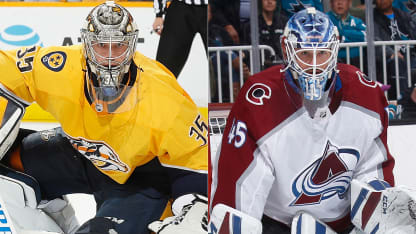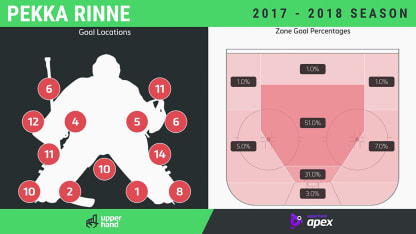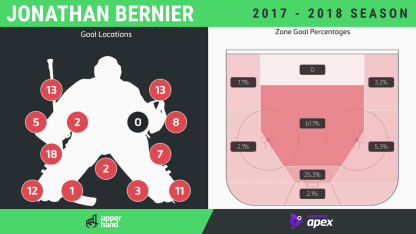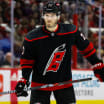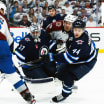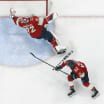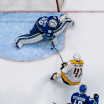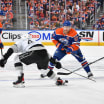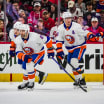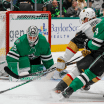Rush job: Despite the adjustments -- or perhaps because he was adjusting to them during the season -- Rinne was beaten cleanly, from distance, on several rushes. Rush chances accounted for 24 of the 30 "clean-look" goals, time to be set and see the release of the shot -- among the 100 tracked goals for this study.
Create traffic: Screens accounted for 18 percent of the tracked goals against Rinne, 4.4 percent below the average in breaking down playoff starting goalies for this project during the past two seasons. But that is down from 33 percent of the goals against Rinne last season, and the difference appears to be his own players not getting in his way as often, which was a problem in the past. It may also be a function of the adjustments, with Rinne's taller, narrower stance making it easier for him to shift into long shots with his body rather than reaching for them, which leaves fewer holes in his 6-foot-5 frame. It also helps explain why deflection goals are down to 18 percent this season from 27 last season.
Open him up in tight: Rinne's more familiar hunched-over stance returns as plays get closer to the net and, like any big goalie, the holes are bigger when the goalie is forced to move laterally, a combination that played a role in many of the 13 goals through the five-hole and nine under each arm Rinne allowed. All those numbers were down from last season, but the tendency to reach, and create holes, is apparent when play is closer to his net.
On the glass: Rinne is the most aggressive goalie in the NHL when it comes to playing pucks dumped behind the net, slamming his body into the boards or using save techniques to stop dump-ins that most goalies would leave for their defense. He'll even go behind the net to corral dump-ins high up on the glass, which is usually a no-no because of the increased risk of bad bounces that end up in front of an empty net, as well as the possibility of shooters faking the dump in and then firing at goal once the goalie commits toward the boards.
